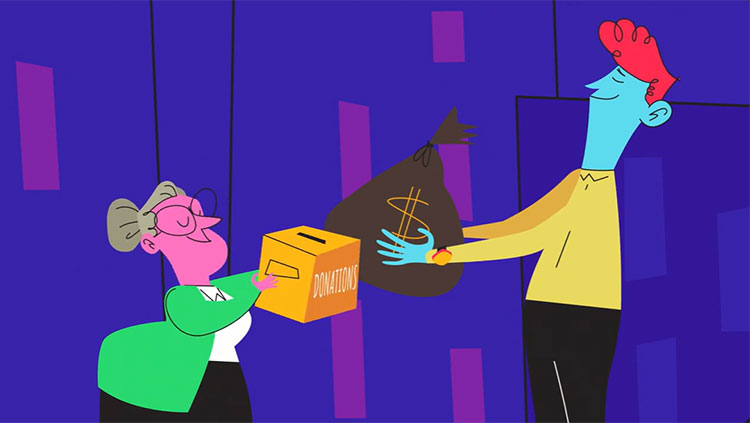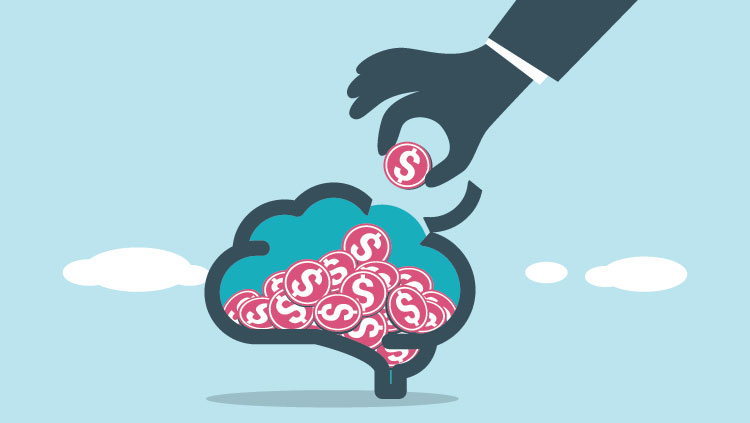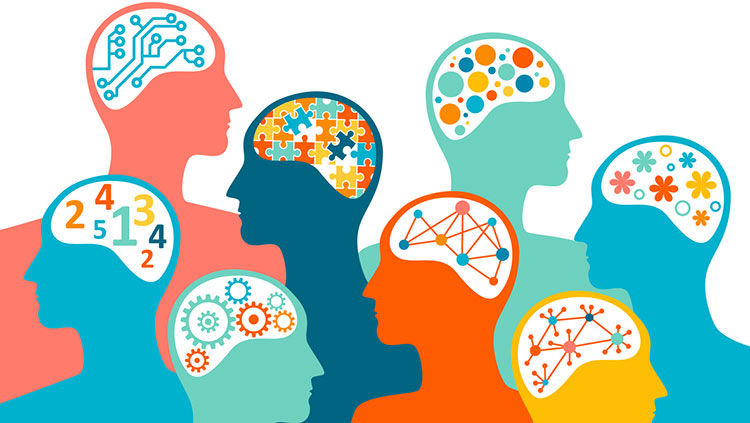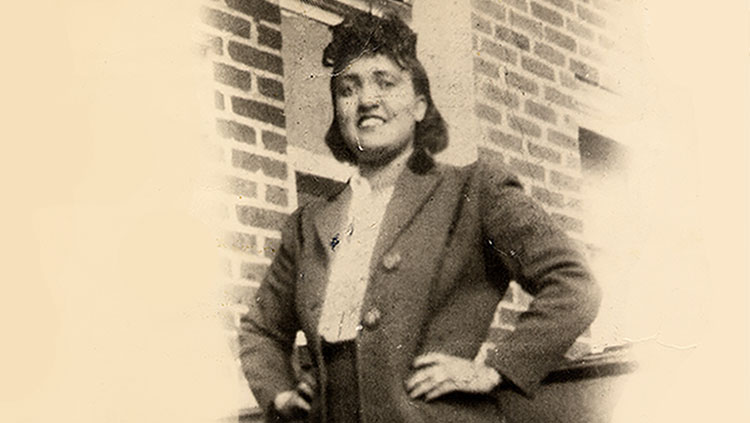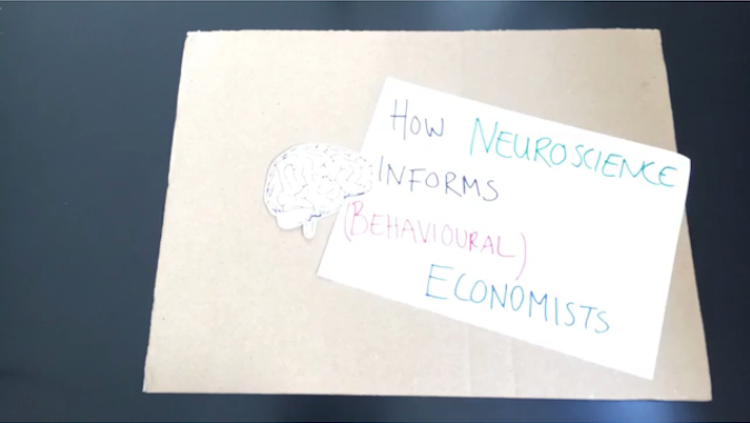The Impact of Isolation on the Brain
- Published20 Mar 2019
- Source BrainFacts/SfN
Richard J. Smeyne, professor of neuroscience at Thomas Jefferson University, conducted experiments with mice to examine how isolation affects the brain. He found that after one month of isolation the neurons in the sensory and motor parts of the mice’s brains shrank by 20 percent, and that shrinkage remained steady after three months in isolation. He discusses how these findings are significant for revealing how solitary confinement causes physical damage to the brain.
This video is part of a series on Solitary Confinement, presented at Neuroscience 2018 for the Social Issues Roundtable.
CONTENT PROVIDED BY
BrainFacts/SfN
Transcript
I'm going to be talking about really burrowing down a little bit on the neuro and anatomical effects of isolation. As Michael mentioned, we have been working together and collaborated since 2005 studying the effects of environmental enrichment and the role of exercise in neuroprotection, and as Michael mentioned in a conversation he had with [Jules Labelle] who will come after me, and I'll be speaking fast because you really want to hear the legal aspects of this and I don't want to run out of time. He said that we're really looking at this backwards because in humans, we really all start in enriched environments rather than the few cases of European orphanages and the like, and then we isolate people. We don't start in isolation and then put people into enrichment, which is what we were doing. And, as I say on a poster tomorrow that we have tomorrow morning, A to B in this case does not equal B to A.
And so, we started asking these questions, and as said here... I think is it... Yeah, there it is. Human beings, we are social animals, and I want to make the case that not only humans, but all mammals and now locusts are social animals. Which I did not know the social aspects of invertebrates. It has been mentioned that in this case, people who live in isolated conditions and has been described, have lots of documented psychiatric issues including depression and stress, which [inaudible] talked about, and the [inaudible] that comes from that.
I'm not going to get us through this because Michael did, but this is sort of what the pictures of the solitary confinement cells, and as he said, at this time, on today, there's approximately 80,000 people sitting in these solitary conditions.
As I said, it's important to realize that rodents, like humans, are social creatures. When you move them into isolated conditions, their behaviors change. [inaudible] talked about the vocalizations and their other behaviors change also, and there's actually articles like this one: "No One Likes to Live Alone: Social Housing of Lab Animals."
So, the question is, "How do we go about replicating this?" And so, I've sort of started to look at areas. Social research said that humans need about 150 square foot per person for their mental health. So, just going into the corrections system and putting in the size of the cells, they are given half of the square footage that is documented to be necessary for mental health. So, San Diego here, right now, if you take all of the area of San Diego and all of the people here, not including the thirty-some thousand of us now included in this, there's about 737 square foot for people. The most populous place in the country is Dhaka in Bangladesh. There, it's still 173 square feet for people.
So, we try to replicate that and say, "Well, how do we give this in animals?" So, what we've done is... Sorry. Okay, I'm done. No. There it is.
We have these enriched environments here. So, this is a cage that's meter by a meter. So they're very large, they're filled with tunnels, they have places to exercise, and we raise animals- they're born in here- and we have multi-generations of animals that go in here. Now, at a certain point we have to pull them out so that the- and for all of us who work with mice and don't wean quick enough- that they don't constantly keep getting pregnant. So we culled this down to a large number of animals of either males or females, and then we let them go to adulthood. And at three months of age in this, so young adults, we move them into what the rest of us call standard caging, which is isolation in a rack system so they can still see each other, they can vocalize with each other. They just don't have the physical interactions. And this is very similar to the effects that are seen in the corrections department in cells.
I put this in here for the non-neuroscientists, but these are the things that we're looking at: dendrites, cell body, and axons and the effects there are, and I can skip that one pretty fast for this audience.
What we're doing here though is the way we're doing it, and I want to give a shout-out to [inaudible] who's in the first row here. This is his thesis work in my lab, and what he's doing now in this study is, we take the brains, we put them in from the enriched environments there. We raise them for several months and then we put them into isolation. We're looking right now at two points: 30 days after isolation and 90 days after isolation. We then take the animals, we do Golgi staining of these cells so that we can visualize the entire neurons there. And then, looking at both intracortical cells as well as projection neurons from the cortex, we do the Golgi analysis, we do a 3D reconstruction of these neurons, and then we either put bounding boxes around them to look at the areas or we measure the lengths of the dendrites, the number of branching in these cells, and all this that happens at one month of age.
All of this data is unpublished and some of it is less than a week old. You're hearing a lot of this for the first time. So what we have found is one month of isolation does not cause any significant changes in the individual parameters of the axon size or the dendrite length, but overall if you put bounding box, we get about a 20 percent significant reduction of neuronal volume. This is one month of isolation in both sensory and motor cortices. We get a small- this is not... oh, there it is- a small change, nonsignificant change at one month in the amount of branching, but the interesting point to us was, despite this reduction in volume, which you can imagine 20 percent of all these neurons trying to communicate and such, the spine counts went up about 17 percent.
We were really fascinated by this because it suggests at one month the cells are trying to compensate for the loss of volume in the protected connections by up-regulating by about the same amount the spine number. So, at one month, there's still this sort of plasticity going on and the reaction to this change. This was really unexpected because we expected to see a decrease or no change in the spine.
However, when you go by three months, so now 90 days isolated, we now get significant changes in all the individual parameters. There's a change in dendritic length. There's a change in the axon length. We get changes now in branching, in significant decrease in branching. We still have the loss of volume of the cell, but now, interesting, the spines have reduced. So, the compensatory period is over because it's probably the use it or lose it kind of effects there, so they can't keep making these connections, so they don't get the trophic support of all the connections, and those extra supernumerary spines that were made have reduced bounds, so now we're down to the 20 percent loss of spines that equals the 20 or 25 percent loss of volume. So that success at three months, which is all the IACUC is allowing us to keep the animals in isolation, we can't go longer than that. So the IACUC is saying three months is just as long as you can go, but for people, it can be 29 years, or 40 years, or the like.
Other results we have that were eluded to... BDNF levels in the brain. Now, this is a little bit of a different study. This was a study where we did, this is double [inaudible], we took as adults from enriched environment and moved them to isolation, rather than raising them in isolation. Here, BDNF is way down in the brain. Cortisol levels are up and down also, depending on what part of the brain you're in, if you're in the hippocampus or in the serum. Interestingly, looking at mitochondrial damage and DNA repair is significantly reduced. These were studies that were done in Michael Zigmond's lab and in collaboration with Laurie Sanders when she was at the University of Pittsburgh.
Sort of to conclude here, within one month of isolation, neurons in the motor cortex are reduced about 20 percent, also in the sensory. It progresses through three months. Isolation starting in adulthood reduces neurotrophic levels, cortisol levels, and increases DNA damage or the DNA repair mechanisms are decreased. The important question that we're trying to answer now is, "Is this loss permanent or is it about to be reversed?" We're in the process of doing experiments where we have taken the animals after three months and reintroduced them into an enriched environment to ask whether this is important and this is permanent. We don't know the answer, and based on conversations with people who have spent long times in solitary confinement, all of them suggest that the changes, while can be mediated, are probably permanent. At least in people they are.
The implications of our study are probably going to be dependent on where we look because of the functional lateralization and specification of different areas of the brain. So we've looked in motor cortex and sensory cortex. Now, we will be looking at frontal cortex, which then might impact executive decisions. As Huda talked about we'll be looking at hippocampus and hippocampal size and the length. All of these will have different effects, and we don't know if we'll see the same thing or different effects, but we'll be looking in each part of the brains here.
I do want to say one thing. With Robert here and there's two other people in our audience, Jack [Mars] and Delores [Conso], who have spent time in solitary confinement. In spending time and talking to them, we sort of remove ourselves from the ivory tower and listen to the experiences that they have. Their experiences really are leading us to ask the questions. We are not driving this research. It is the research that is being driven by the experience of humans that have been in this condition. I urge any of you not working in this, but if you're working in other fields, if you're working in Parkinson's Disease like I do, or Alzheimer's, leave the laboratory. Talk to people who have the conditions that you're studying because it's really important to get their perspective sort of to lead your research. Anyway, thank you.
Bill Mobley: Beautiful study- Bill Mobley, UCSD- so the early signature was a trophic deficit. You had a smaller brain. I wonder if, in fact, one could anticipate even that one month measure by measures of [inaudible] gene expression even earlier, even after days.
Richard Smeyne: We want to do that. Right now we're taking this sort of 3000 foot view. Where we've also started an epigenetic study, where we're asking these early changes at earlier points. So, we're asking about epigenetic changes and the like. But, no, I expect to see that we would probably see these trophic effects way earlier than any changes that you'd see in structural.
Bill Mobley: And, you know, following on Huda's comment, maybe changes in trophic levels ought to serve as a biomarker to convince whoever we need to convince that this is really having an effect on brain function. Even limited periods of isolation could be dangerous on the basis of valid biomarkers that we could measure.
Richard Smeyne: Would you be on study section?
Bill Mobley: That's a tall order. I'd like to be, in that case.
Moderator: Yes?
Speaker 4: Hi. Amazing panel, by the way, I'm shocked that SFN initially rejected it. So, I hope the crowd size shows that this was an excellent panel. A feeling that in the human studies in Robert's story that seems to be getting mixed in there is boredom, and it seems that with Robert's answer about kind of contextualizing his solitary confinement and giving himself a sense of purpose, if you will, to fight for his humane treatment, it kind of reminded me of the other kinds of social isolation. If we think of astronauts going to space or the early explorers out on ships that the sense of purpose could be possibly mixing in and becomes resilience and might help with the effects of loneliness. I'm even thinking with animals with contrafreeloading, where they prefer to work for their own food than to just be handed it. Are there any studies where we're looking at, maybe with Stephanie's studies, the sense of purpose helping with loneliness in that way? I'm thinking in terms of maybe ameliorating things like the effects of solitary confinement.
Speaker 5: I just want to say that there are studies of POWs who were held in solitary confinement, and they found that the POWs who did the best were those who had a purpose of resisting their confinement or resisting against the enemy. They're the ones who psychologically performed the best in those circumstances. John McCain, I think, being one of them. I don't think he was part of the study, but I think that's part of it.
Huda: You know, I do think that understanding mechanisms of resilience that occur under the variety of conditions would really be helpful both in helping people, but also in our recasting the way we ask questions about how the brain copes. Because this is all about coping, and that's the job of the brain, right? And so there's different styles. Some people have an active coping style, some use anger to good purpose, and some use generosity to good purpose. As long as you don't feel powerless. If we remember the definition of stress, which is loss of control, loss of predictability. How do you change that? How do you gain control? And how do you gain some level of predictability? How do you invent that for yourself, and how does the world help you do that?
Moderator: Yes?
Speaker 7: Thank you for your talk to me. So, my question is, can you comment what the microglia or astrocytes are doing in response to the isolation or just in response to the dendritic changes in these areas that you looked at?
Richard Smeyne: No. We got the anatomy a week ago. We have the sections we are going to be looking at that, so everything is cut. All the brains are there, but we have not done the IBA or GFAP staining. Also, we're going to be looking at peripheral cytokine eventually too, asking about the peripheral immune signaling into the brain. Which-
Huda: Can I just say that, in the depressed brains, when you look at whole genome gene expression, whole transcriptome gene expression, and you ask, "What is the biggest single finding?" It's what's so called "cell type balance." That is the proportion of markers for neurons versus glia, and the biggest loss is on the glia side.
Speaker 7: Thank you.
Also In Law, Economics & Ethics
Trending
Popular articles on BrainFacts.org


